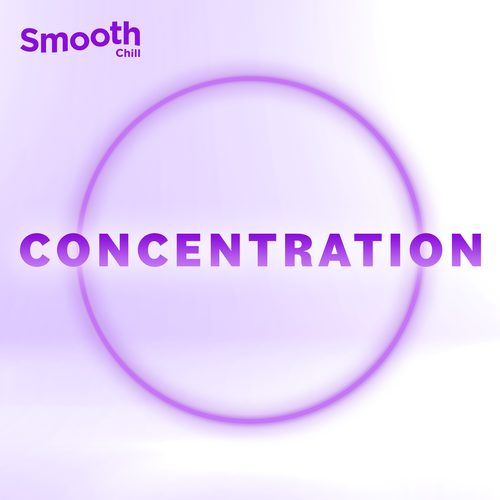The Beautiful South's 10 best songs, ranked
23 January 2024, 15:44 | Updated: 5 June 2024, 15:26

The Beautiful South were a beloved British pop-rock band that formed in 1988 and disbanded in 2007.
Listen to this article
They were known for their witty and sarcastic lyrics, catchy melodies, and diverse musical influences.
The band had several hit singles and albums, both in the UK and internationally, and won two Brit Awards in 1990 and 1992.
Formed in 1988 by Paul Heaton and Dave Hemingway, two former members of the Housemartins, the pair shared lead and backing vocals. Other members throughout the band's history were former Housemartins roadie Sean Welch (bass), Dave Stead (drums) and Dave Rotheray (guitar).
They were later joined by various female vocalists, including Briana Corrigan, Jacqui Abbott and Alison Wheeler.
Whether you are a fan of the band or just curious about their music, you will find something to enjoy in this selection of the Beautiful South’s greatest hits.
-
I'll Sail This Ship Alone

I'll Sail This Ship Alone
Released in 1989, this song is a bitter and ironic ballad about a failed relationship, in which the narrator vows to continue his life without his former partner, even if he has to face loneliness and hardship.
The song reached number 31 on the UK Singles Chart and was included on the band's debut album Welcome to the Beautiful South.
It was inspired by a real-life breakup that Paul Heaton had with his girlfriend at the time.
-
Old Red Eyes is Back

The Beautiful South - Old Red Eyes Is Back
'Old Red Eyes Is Back' was released in 1991 as the first single from their second album 0898 Beautiful South.
The song was written by the band’s lead singer Paul Heaton and guitarist David Rotheray, and it reached number 22.
The song is a dark and humorous portrayal of a man named ‘Old Red’, who is clearly suffering from alcoholism and its consequences. The verses describe his drinking habits and how they affect his health, appearance, and relationships.
The chorus reveals his regrets and the things he has sacrificed for his addiction: “all the things I could have done instead”. The song ends with the announcement of his death: “Old Red, he died”.
The song title is a play on that of Frank Sinatra’s 1973 album Ol’ Blue Eyes Is Back.
The music video is set in a pub and features two Paul Heatons. One, a sober-looking man who sings the lyrics telling the story of ‘Old Red’. The other, who sings the chorus, is presumably meant to be ‘Old Red’, with messy long hair and his face looking rough from heavy drinking.
-
You Keep It All In

The Beautiful South - You Keep It All In - TOTP - 1989
Their second single is a catchy and sarcastic critique of emotional repression, featuring the contrasting vocals of Paul Heaton and Briana Corrigan.
The lyrics describe various scenarios of people who keep their feelings bottled up, such as a husband who is ready to fight, a daughter who sleeps alone, and a couple who have a violent argument.
The music video was shot in the USA and featured the band performing in front of various American landmarks, such as the Statue of Liberty and the Golden Gate Bridge.
-
Don't Marry Her

The Beautiful South - Don't Marry Her (Official Video)
'Don’t Marry Her' was the first single from their fifth studio album, Blue Is the Colour, in 1996. The song features vocalist Jacqui Abbott, and is a sarcastic plea from a woman to a man who is engaged to someone else, urging him to leave his fiancée and run away with her.
She paints a bleak picture of his future married life, using vulgar language and insults to describe his partner and their relationship.
The song caused some controversy for its original lyrics, which included the line “Don’t marry her, f*** me” in the chorus, and the word “b*llocks” in the second verse. The radio edit changed these words to “have me” and “Sandra Bullocks”, respectively, making the song more suitable for airplay.
-
Perfect 10

The Beautiful South - Perfect 10 (Official Video)
This was released as the first single from their sixth studio album, Quench, in 1998. The song reached number two on the UK Singles Chart, selling 89,000 copies in its first week, and became the band’s last UK top-10 hit.
It is a song that celebrates the diversity of body shapes and sizes, and challenges the conventional standards of beauty and attraction. The song uses clothing sizes and penis length as metaphors for the different preferences and expectations that people have in romantic relationships.
The song also expresses the idea that love is not based on physical appearance alone, but on personal connection and compatibility. The song’s chorus states: “We love our love, in different sizes / I love her body, especially the lines / Time takes its toll, but not on the eyes / Promise me this, take me tonight.”
The song was written by Paul Heaton and Dave Rotheray, and sung by Heaton and Jacqui Abbott. The song features contributions from Heaton's Housemartins bandmate Norman Cook, aka Fatboy Slim, who helped with the production, and Paul Weller, who played the rhythm guitar.
-
Good as Gold (Stupid as Mud)

Good As Gold (Stupid As Mud) [Official video] - The Beautiful South (HD/HQ)
This track was released in 1994 as the second single from their fourth album, Miaow. The song reached number 23 on the UK Singles Chart.
The song is a catchy and upbeat tune, which compares the narrator's optimistic attitude with his or her lack of intelligence.
The song also references the famous actress Ingrid Bergman, who starred in many classic films such as Casablanca and Notorious. The narrator wants a romantic kiss like the ones Bergman shared with her co-stars on screen.
The song had a funny music video that ends with Paul Heaton riding an elephant through British roads, as you do.
-
Everybody's Talkin'

The Beautiful South - Everybody's Talkin' (Official Video)
'Everybody’s Talkin'' was originally written and recorded by American singer-songwriter Fred Neil in 1966, but it became more famous when it was covered by another American artist, Harry Nilsson, in 1968.
Nilsson’s version was used as the theme song for the film Midnight Cowboy, which won an Academy Award for Best Picture in 1969. The song describes the narrator’s desire to escape from city life and find a peaceful place in nature.
In 1994, the Beautiful South released their own cover of the song. Their cover was a hit in the UK, reaching number 12 on the singles chart. It was also included on their album Miaow, which was nominated for the Mercury Prize in 1994.
-
Song for Whoever

The Beautiful South - Song For Whoever (Official Video)
This track was released in 1989 as the first single from their debut album Welcome to the Beautiful South.
The song was written by Paul Heaton and guitarist David Rotheray, and it reached number 2 on the UK Singles Chart, becoming their highest-charting single at the time.
The song is a satire of the commercialization of love songs, as the narrator confesses that he writes romantic lyrics for various women he barely knows, only to make money from the royalties.
He lists the names of some of his muses, such as Shirley, Deborah, Julie, Jane, Jennifer, Alison, Phillipa, Sue, and Annabel, and admits that he forgets their names after he writes the songs.
The song is notable for its ironic contrast between the cynical lyrics and the melodic tune, which features a piano intro, a brass section, and a gospel choir. The song also parodies the conventions of love songs, such as using metaphors, rhymes, and repetition.
-
Rotterdam (Or Anywhere)

The Beautiful South - Rotterdam (Or Anywhere) [Official Video]
'Rotterdam' was the first single from Blue Is the Colour. The song features lead vocals by Jacqui Abbott, who joined the band in 1994 as a replacement for Briana Corrigan.
The song reached number five on the UK Singles Chart and stayed in the top 40 for nine weeks, becoming one of the band’s most successful hits.
The song is a sarcastic and bitter commentary on the dullness and conformity of modern life, comparing different cities to Rotterdam, a major port city in the Netherlands. The lyrics suggest that people are interchangeable and indistinguishable, regardless of where they live or what they look like.
The song was written by Paul Heaton, the band’s co-founder and main songwriter, who was inspired by his experience of being unwelcome in a bar in Rotterdam. He told The Guardian: "I wrote the lyrics to 'Rotterdam' sitting in a bar on the north end of Lijnbaan, Rotterdam’s main shopping street. The bar was modern-looking and not friendly at all.
"It was in January 1996, about three in the afternoon. I’d probably been up all night drinking, I probably smelled, and I’d walked into their bar and plonked my bag down. I wasn’t the sort the owners wanted in there. They probably thought: ‘Oh God, we don’t want this bloke to be our regular. Let’s make sure he never comes back.’
"So they were trying to think of different excuses to move me on, like: ‘You can’t sit there, there’s a private party coming in.’ I got really pissed off – and I wrote a short story that became a very bitchy song, scribbling it down while sitting there."
-
A Little Time

The Beautiful South - A Little Time (Official Video)
This ballad reached number one on the UK Singles Chart in 1990 and won the Brit Award for British Video of the Year in 1991.
The song is a duet between vocalists Dave Hemingway and Briana Corrigan, who portray a couple in a troubled relationship. The lyrics express the frustration and resentment of both partners, who want different things from each other.
It was written by Paul Heaton and David Rotheray, and they have said that the song was about relationships in general, and not based on any personal experience.
The award-winning music video, directed by Nick Brandt, shows the couple arguing and destroying their house, with flour, feathers, and a teddy bear's head as props.





















